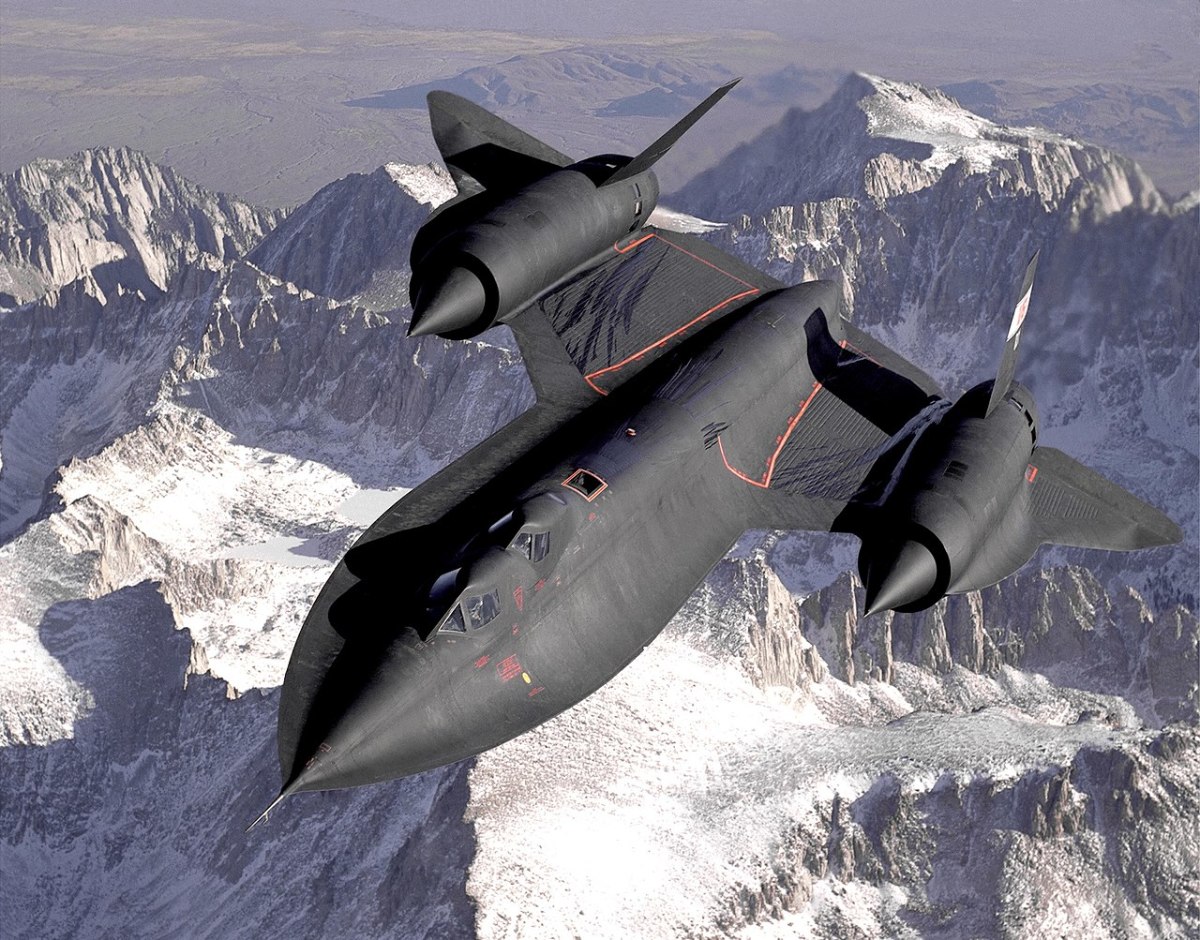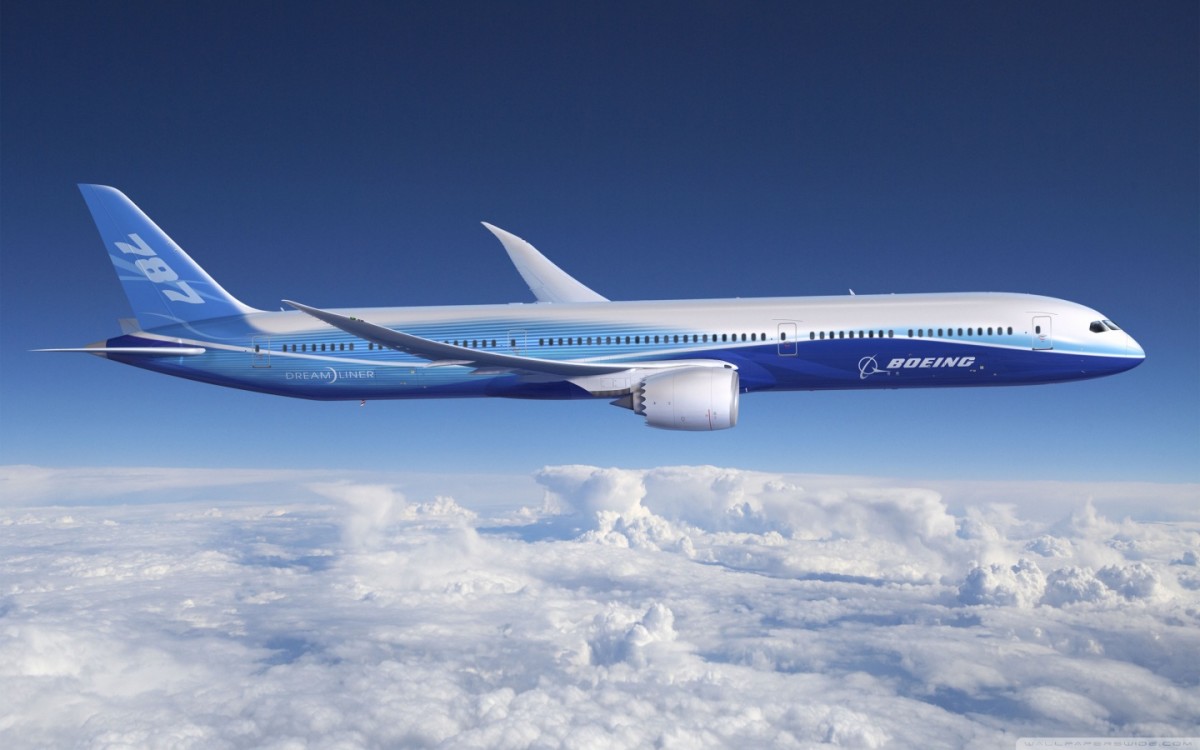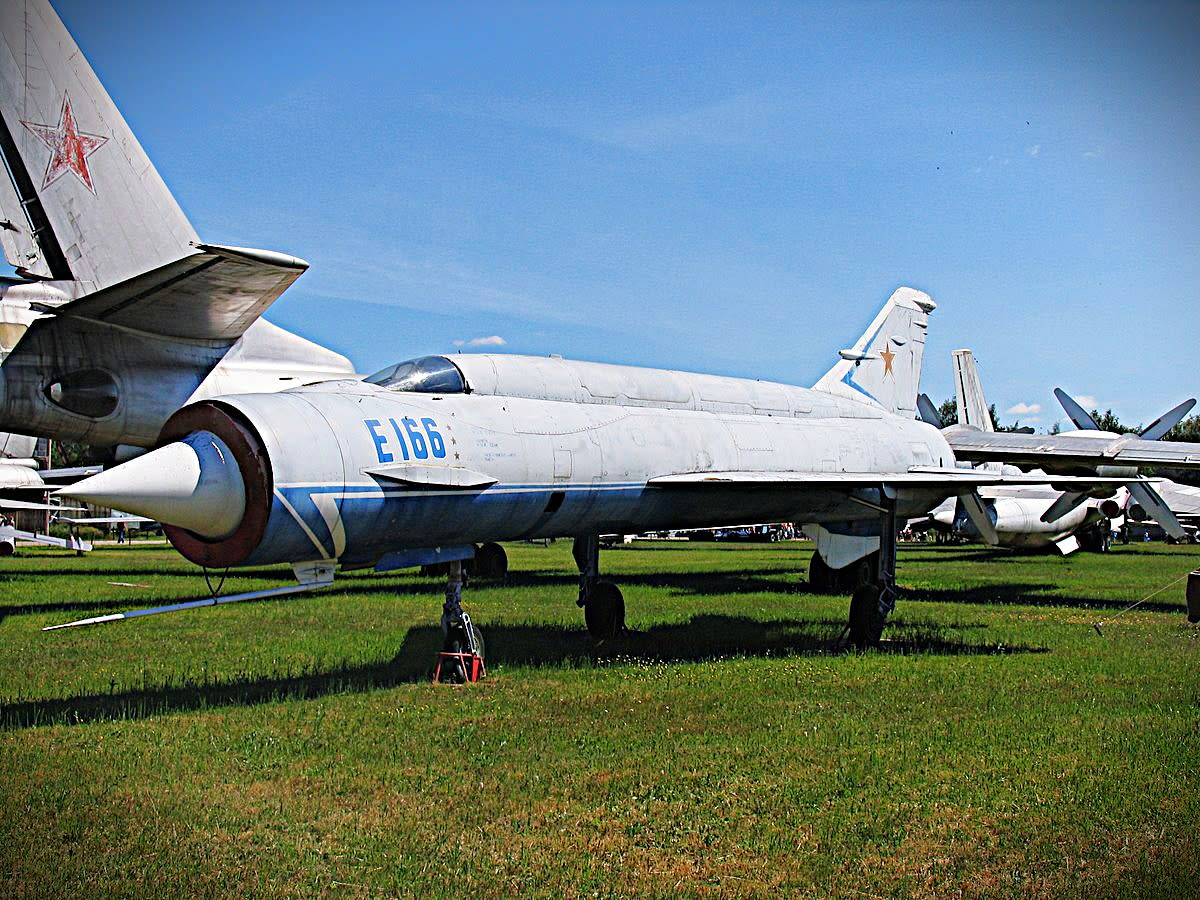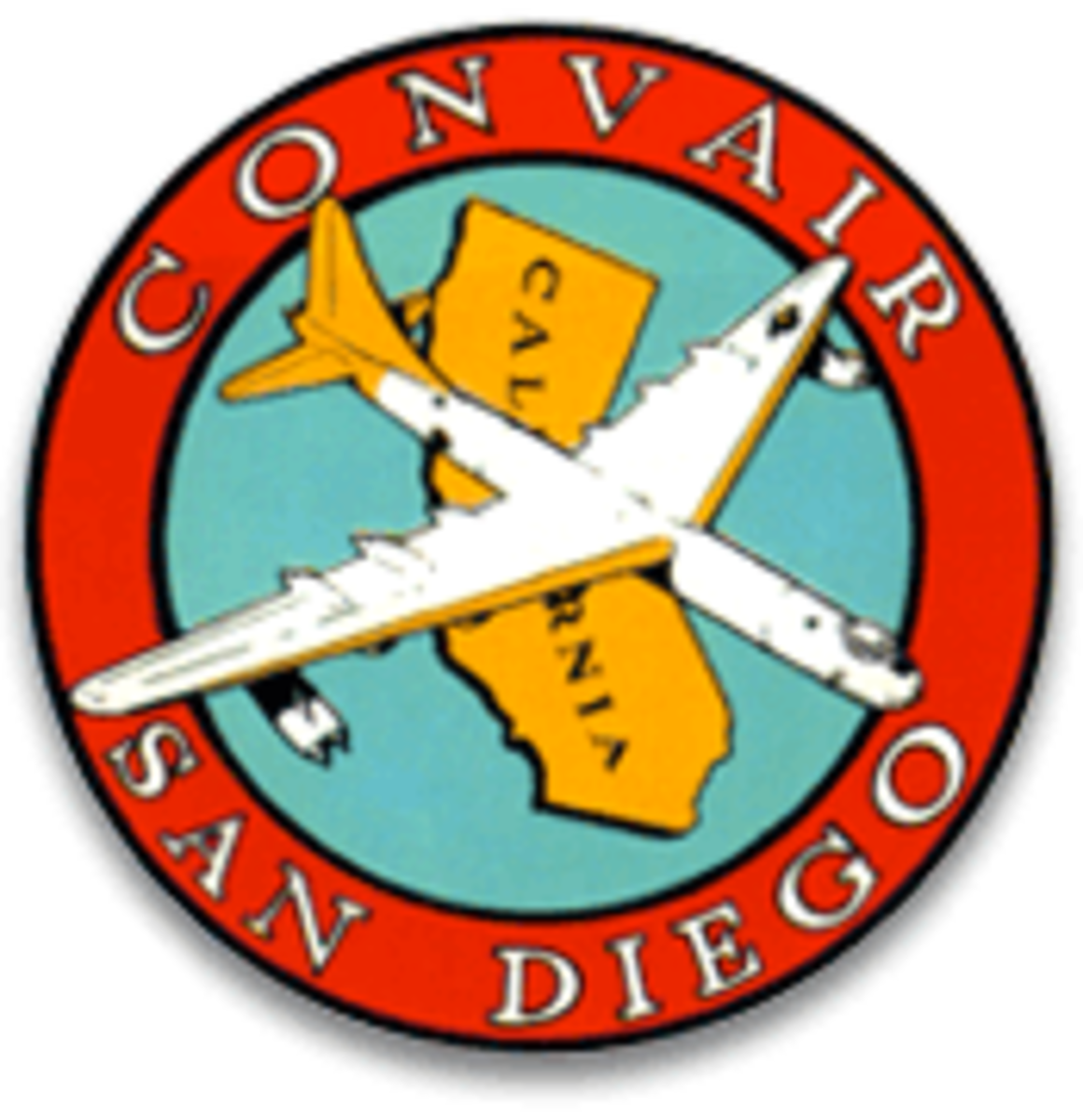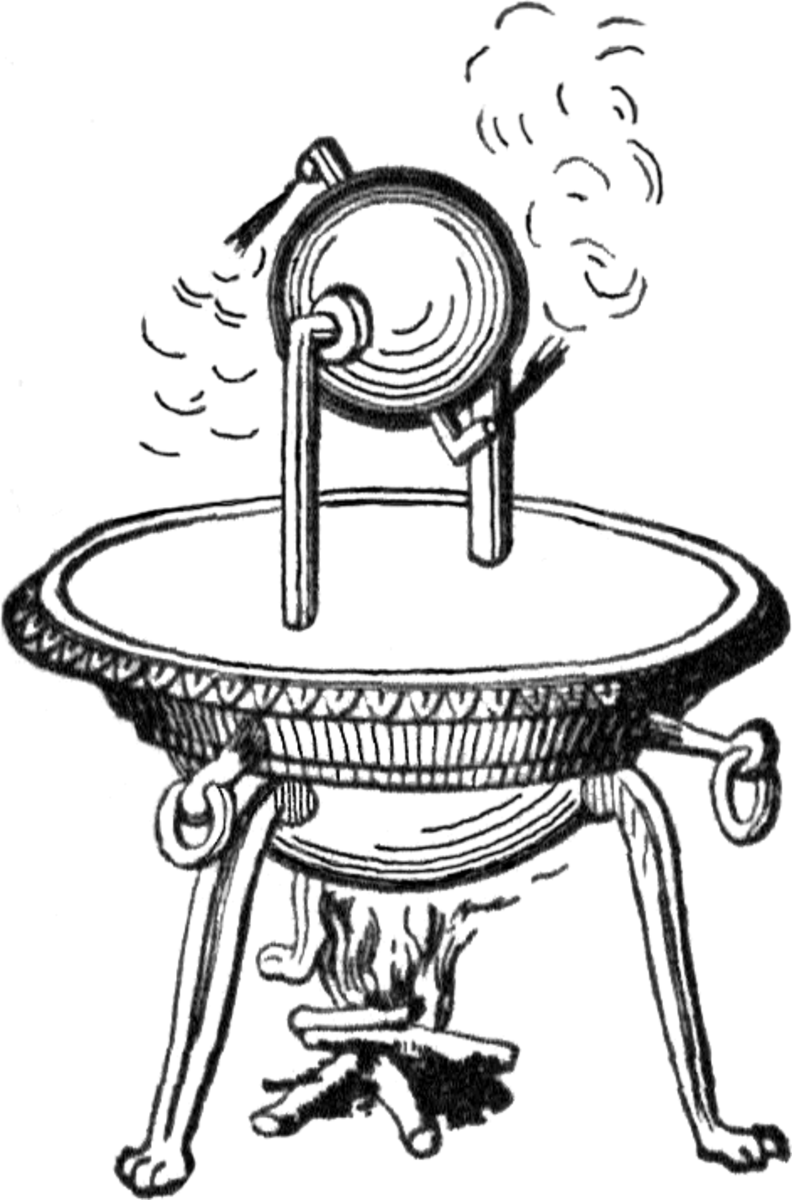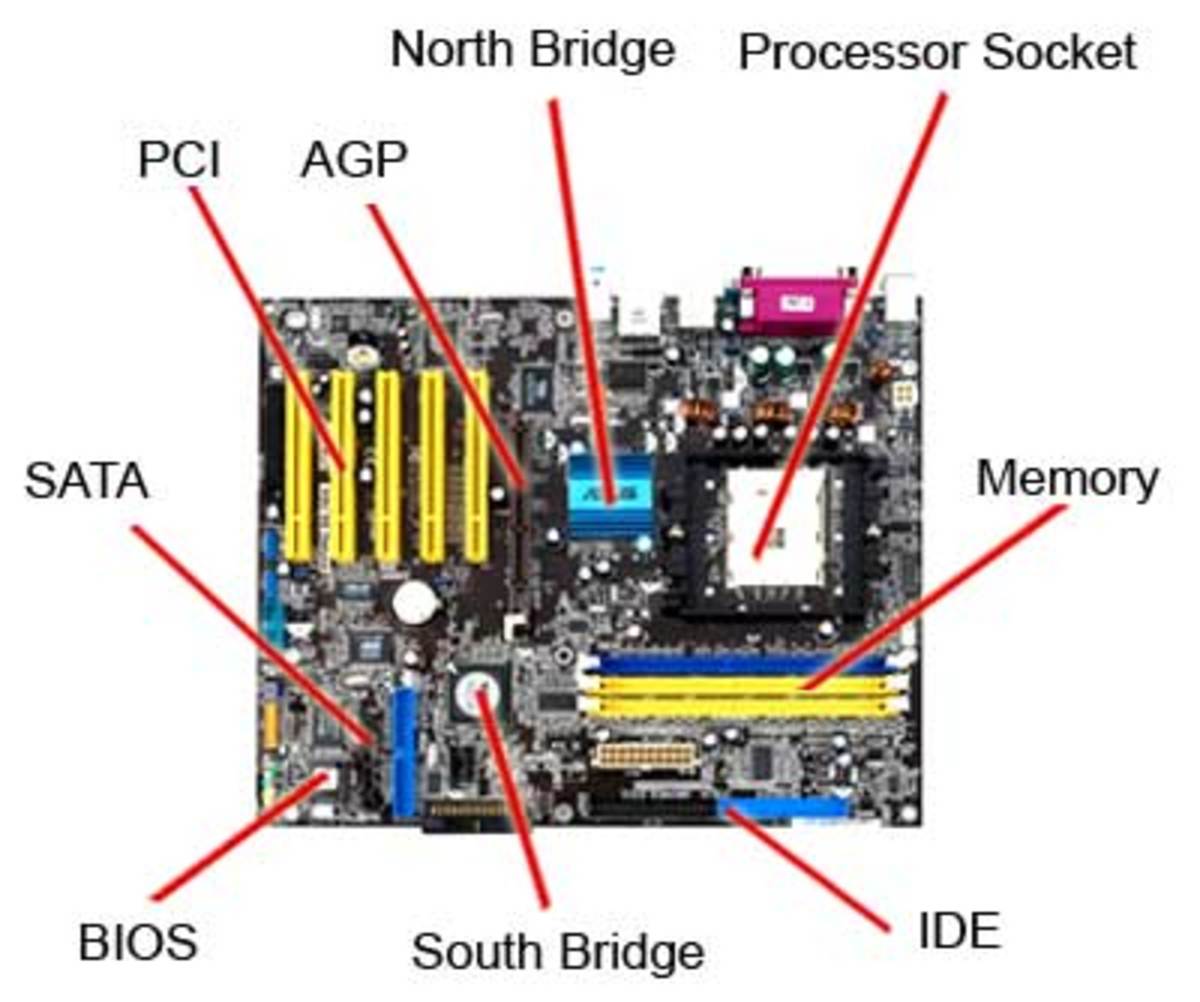Would the SR-71 be faster if it were rocket-powered?
The SR-71 (originally called the A-12) was a military aircraft that was built in the 1960's. It was the fastest mass-produced aircraft in the world, for several decades. It made it's first flight (under the designation A-12) on April 31, 1962. In July, 1976 it set a record of 2,193 miles per hour. This speed record has been unbroken for nearly 40 years. On it's last flight, it flew from Los Angeles to Washington D.C. in one hour, 4 minutes, and 20 seconds. The only aircraft that is faster than the SR-71 is the X-15, and the X-15 is capable of flying at over 4,000 miles per hour. The X-15 was a one-of-a-kind aircraft, while the SR-71 was mass-produced, hence, the SR-71 was the fastest mass-produced aircraft in the world.
Being fast gave it bizarre characteristics. Heat was a major problem. The air that came into contact with the outer surface of the aircraft rubbed against it, and this rubbing, or 'friction' generated tremendous heat. The glass windows in the aircraft's cockpit would get so hot, pilots would burn their hands, if they touched the inside of the windows. The cockpit windows were made of two-inch thick panes of quartz, since that was the only material that could withstand the 600-degree window temperature. At high speed, some parts of the aircraft could reach temperatures of 1000 degrees. One way to solve the heating problem was the engineer a cooling system to cool the metal skin of the aircraft. Engineers designed a labyrinth of tubes to carry coolant back and forth under the aircraft's metal skin. They used the aircraft's fuel as a coolant, so the fuel itself was being circulated back and forth through the cooling system, to keep the plane's metal skin from melting. They had problems with the coolant system leaking fuel. When the SR-71 was parked on the runway, ground crews often noticed fuel leaking from the plane's cooling system.
In the 1960's when the SR-71 was designed, the carbon tiles that are used as the heat shield of the space shuttle hadn't been perfected yet. Indeed, if we were designing the SR-71 today, it would probably be covered with carbon tiles, just like the space shuttle. A carbon tile heat shield would be far superior to a cooling system that depended upon the aircraft's fuel being used as a coolant.
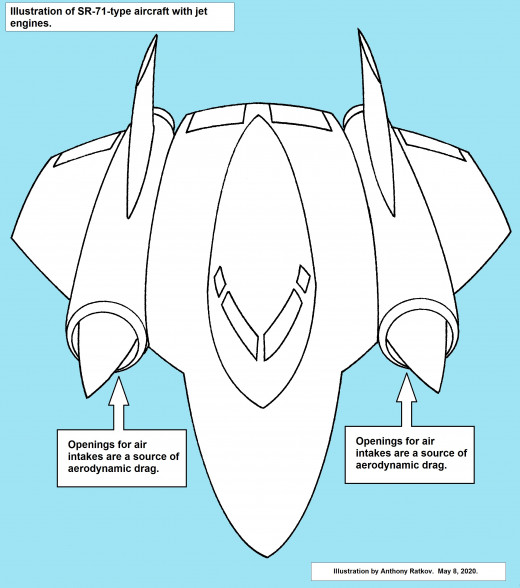
If you wanted to make the SR-71 faster, you would replace it's jet engines with rocket engines. The rocket engines would be able to provide more thrust, but providing more thrust isn't the only way rockets would make the plane faster. Jet engines require air intake openings, but rocket engines do not. The air intake opening of a jet aircraft produces aerodynamic drag, and drag has the effect of slowing down the aircraft. The illustration above shows an SR-71 type aircraft, with air intakes for it's jet engines.
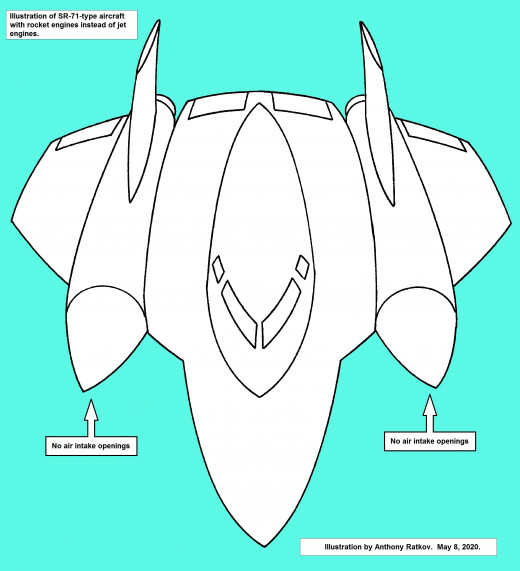
The illustration above shows an SR-71 type aircraft with rocket engines instead of jet engines. Notice that there are no air intake openings to produce drag. Instead of an air intake opening, each engine is capped with a streamlined cone, to provide a smooth frontal surface to pierce the air stream. So, the only way to improve upon the SR-71 is to replace the jet engines with rocket engines, thereby eliminating the drag-producing air intakes, and replacing the coolant system with carbon tiles.

